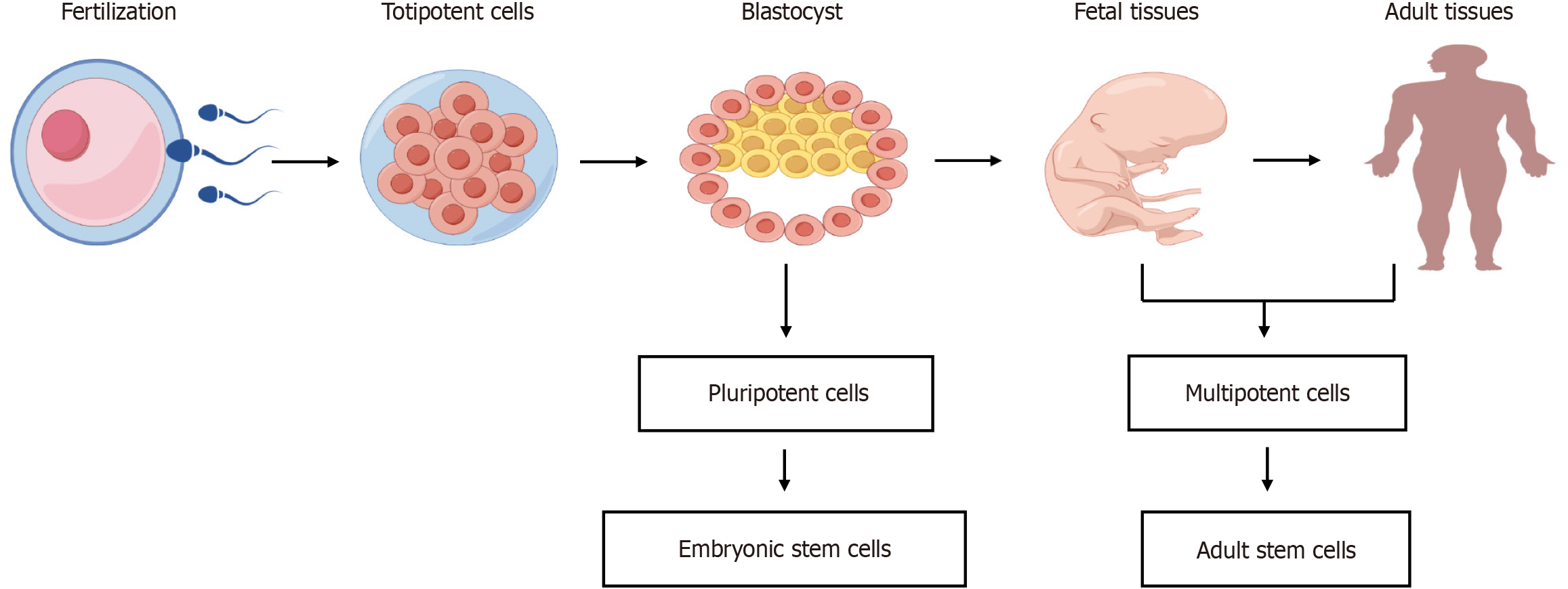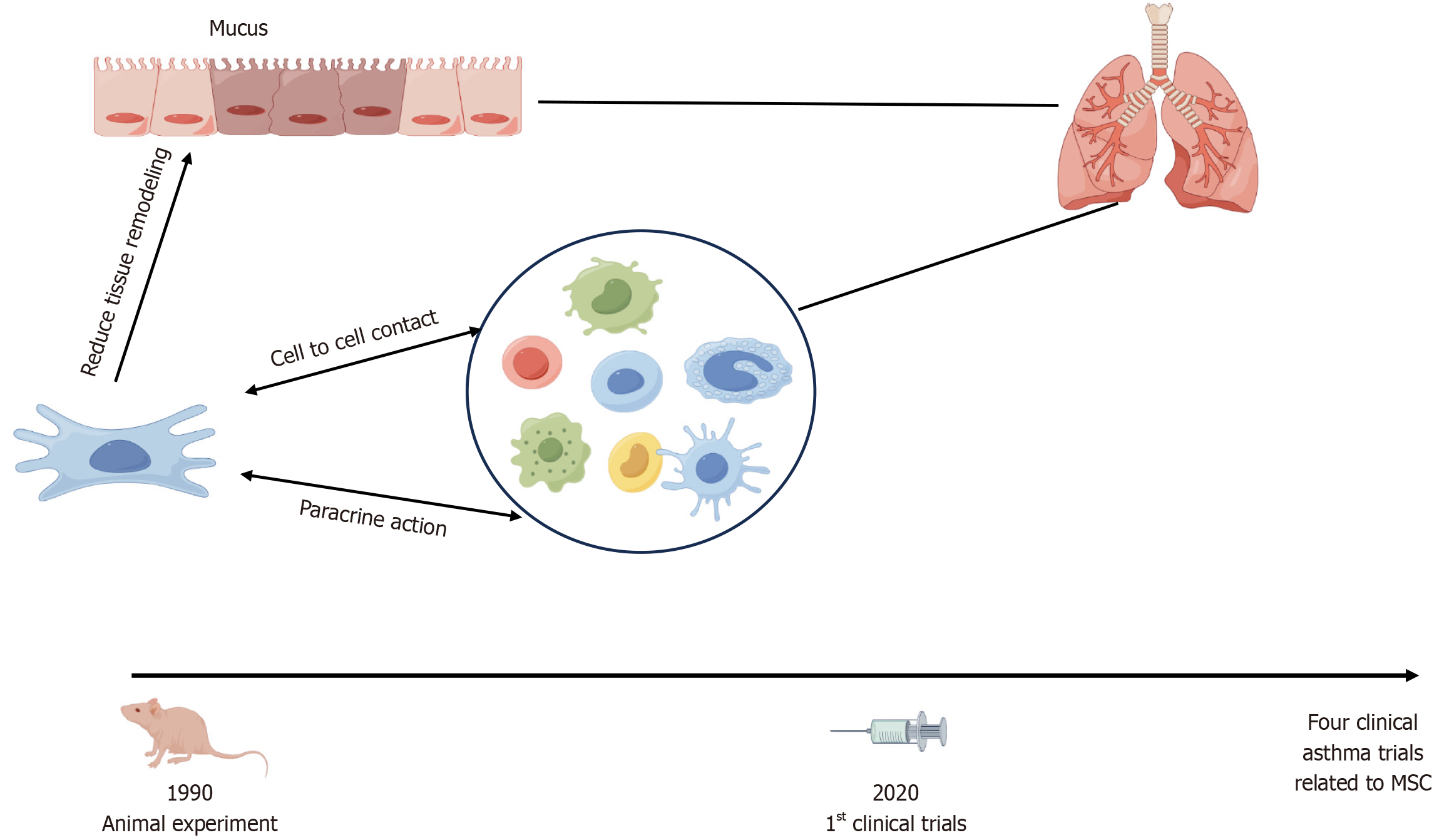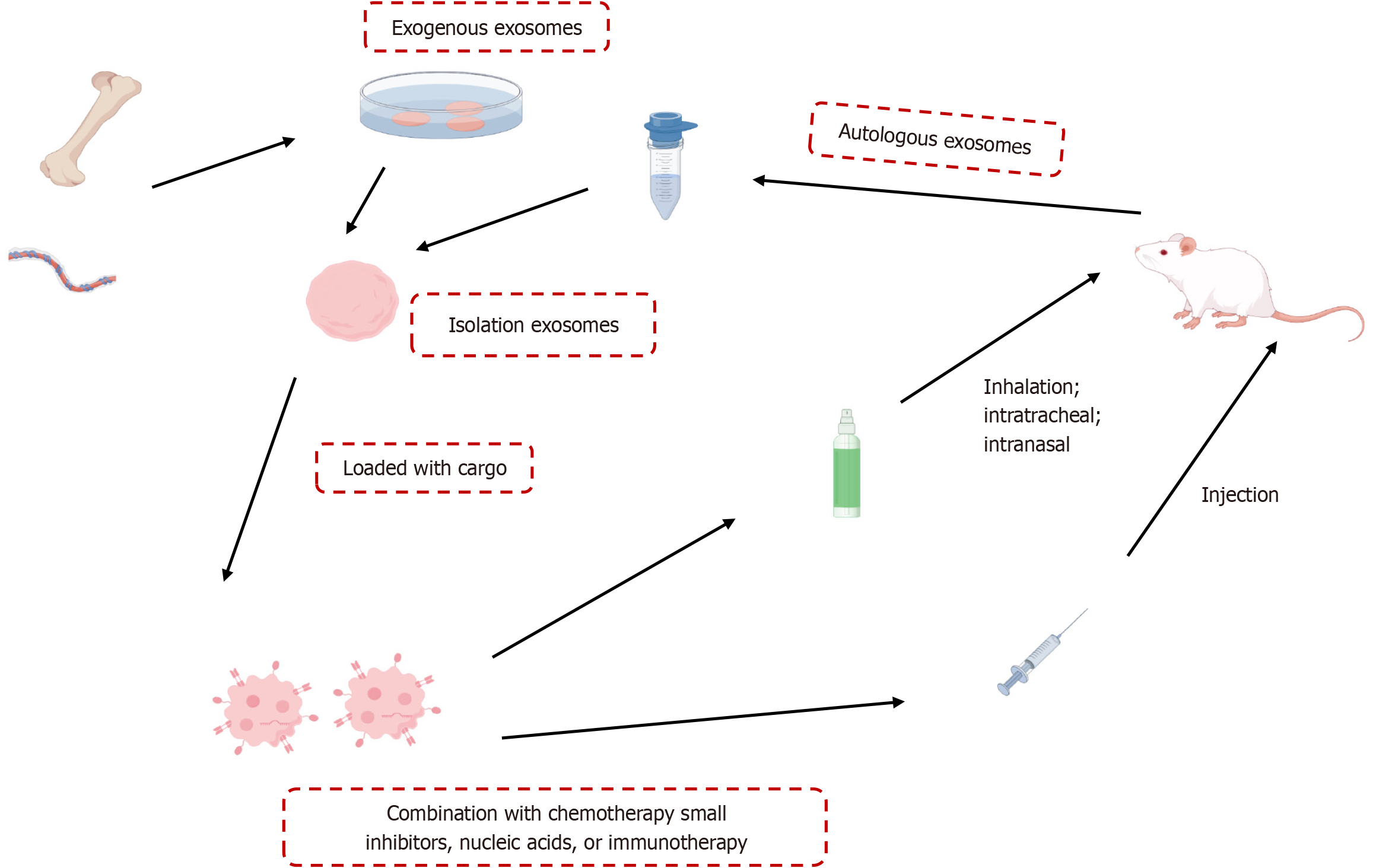Copyright
©The Author(s) 2025.
World J Stem Cells. Feb 26, 2025; 17(2): 103599
Published online Feb 26, 2025. doi: 10.4252/wjsc.v17.i2.103599
Published online Feb 26, 2025. doi: 10.4252/wjsc.v17.i2.103599
Figure 1 Development and progression and stem cell potency.
The figure was drawn by Figdraw. During the earliest embryonic developmental stages, totipotent stem cells, capable of giving rise to any cell type, are present in the zygote during the initial cell divisions following fertilization. With the formation of the blastocyst, stem cells evolve into a pluripotent state, enabling them to differentiate into nearly any cell type, marking a critical step in embryonic development. As development progresses and the primitive streak forms, cells predominantly exhibit multipotent capabilities, restricting their differentiation potential to a narrow array of cell lineages excluding embryonic germ cells. In subsequent developmental phases, stem cells are classified as either ‘embryonic’ or ‘adult,’ reflecting their specific differentiation potentials and roles within an organism’s cellular hierarchy.
Figure 2 Experimental and clinical investigations into mesenchymal stem cell-mediated mechanisms of asthma causation.
The figure was drawn by Figdraw. Mesenchymal stem cells (MSCs) reduce the production of various inflammatory factors, promote the production and release of anti-inflammatory factors, suppress the inflammatory response, restore the T helper type 1/2 balance, and repair damaged epithelial cells, while modulating the immune response through direct cell-to-cell contact. The paracrine action of MSCs is attributed to the release of exosomes containing biologically active substances that effectively mimic MSC immunomodulatory effects. After the MSC-mediated asthma mechanism was elucidated, the first clinical report describing the beneficial effects of bone marrow-derived mononuclear cell therapy in a patient with severe asthma was published in 2020. Currently, four clinical trials grounded in animal experiments are in progress, and they are evaluating the therapeutic effects of systemically administered MSCs registered on the clinicaltrials.gov platform.
Figure 3 Mesenchymal stem cell-exosomes treatment of asthma models purified exogenous and autologous exosomes derived from mesenchymal stem cells express various functions in treating asthma in animal models.
The figure was drawn by Figdraw. Intravenous, inhalation, intratracheal, and intranasal administration for delivering exosomes, as well as the cargo carried by the exosomes, could have important effects on treatment.
- Citation: Chen QH, Zheng JY, Wang DC. Asthma and stem cell therapy. World J Stem Cells 2025; 17(2): 103599
- URL: https://www.wjgnet.com/1948-0210/full/v17/i2/103599.htm
- DOI: https://dx.doi.org/10.4252/wjsc.v17.i2.103599











